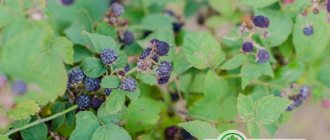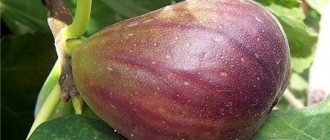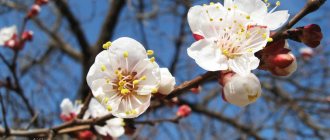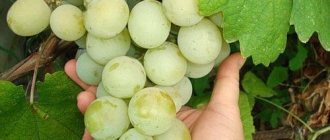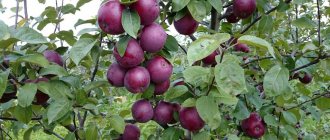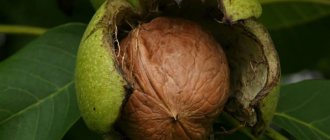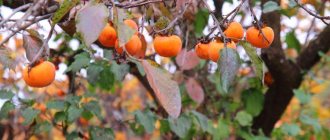Cercis (Cercis), scarlet grass, scarlet grass, Judas tree is a deciduous shrub or tree of the Legume family that remains decorative throughout the year. These unique plants can be found in the Mediterranean, Asia, and North America.
Trembling, heart-shaped leaves with smooth edges and raised veins on the surface are attached using petioles and arranged in a spiral pattern on the branches. The delicate green shade of the leaves darkens by mid-summer, and in the fall it becomes yellow and crimson.
The lifespan of the plant ranges from half a century to 70 years. The Cercis tree reaches a maximum height of 18 m. In the first year, its branches are covered with reddish smooth skin. On young shoots it is olive-brown or grayish in color, and on mature branches and trunk it becomes coarser and becomes black-brown. The trunk often grows twisted, as if climbing.
Amazing flowering of cercis
How Canadian crimson blooms photo
The plant is characterized by an interesting phenomenon called cauliflory. Thus, inflorescences are formed not only on the branches, but also on the trunk itself. Shoe-shaped pink flowers are collected in dense brushes or bunches. The flowering period occurs at the end of April-May and precedes the blooming of leaves. It seems that hundreds of moths have settled on a bare tree. The subtle, subtle aroma of flowers attracts insects. Savoring the pollen, they reveal the honey-bearing “talent” of the cercis.
Cercis fruits photo
After flowering, clusters of pods up to 10 cm long are formed, which hang on the tree until next spring. The fruit is flat, the surface is glossy, and inside there are 4-7 oval dark brown beans.
When to expect flowering
Surprisingly, during the first couple of years of life, the above-ground part of the Cercis almost completely dies off during the cold season. The Judas tree grows slowly; only by the age of three will a powerful root system be formed and the first buds appear. Full lush flowering should be expected around the 5th year, when the crown becomes quite dense.
Description
The plant belongs to the Legume family and is distributed in the eastern and western Mediterranean, China and North America. Botanists distinguish seven main species, which differ in resistance to frost, height, flower color and structure.
The perennial plant usually lives from 50 to 70 years. Shrubs or trees shed their leaves for the winter. Their maximum height is 18 m. The bark on old branches and trunk is black-brown with small cracks. Younger shoots are olive-brown or gray in color. The twigs of the first year are colored in reddish tones and have a smooth surface.
The simple ovate leaves have smooth edges and raised veins. They are attached to the branches using petioles and arranged alternately in a spiral. Small linear stipules fall off early. The foliage color is light green, darkening slightly by mid-summer.
Even before the leaves bloom, pink buds of future flowers become noticeable on the trunk and branches. They sit tightly on the bark or in the axils of the leaves. Flowering continues for a month until the foliage fully opens. Flowers of irregular shape are collected in dense bunches or brushes. The corolla of the flower resembles a small moth, while the calyx has the shape of an open bell. Each flower has 5 pink or purple bright petals, up to a dozen short stamens and one short ovary.
After flowering, large pods up to 10 cm long are formed on the tree. They contain from 4 to 7 fruits. The beans are oval and flat, with a glossy surface.
Growing Cercis from seeds
European Cercis seeds photo
Cercis beans have a dense shell through which the sprout is unable to break through. Therefore, before sowing, they must be scarified (scalded with boiling water, kept in a solution of sulfuric acid) or stratified (kept for 2-3 months at a temperature of 0 to +4 °C, for which the vegetable section of the refrigerator is perfect). If you sow in the fall or the scarlet beans overwinter in pods on the tree, they will undergo the stratification process naturally and there will be no need for additional processing.
Sowing in the ground
So, Cercis seeds can be sown directly in open ground. We just dig up the area, break up the piles and level the soil. We plant several beans to a depth of 3-4 cm at a distance of 15 cm from each other. We thin out the seedlings and plant them at our own discretion; the distance between adult plants should be at least 2 meters.
It is advisable to cover winter crops with peat or dry leaves; in very cold regions they should be additionally covered with spruce branches. Please note that seeds of heat-loving varieties will germinate if the winter temperature does not drop below 3-4 °C with a plus sign; they are only suitable for regions with a southern climate.
Let’s say spring sowing, the air temperature outside should be 15-20 °C.
Growing Cercis from seeds at home
Cercis from seeds at home photo
You can plant scarlet seeds in an apartment; start sowing from the end of February, be sure to follow the recommendations for scarification or stratification.
- You can sow one seed at a time into the cells of seedling cassettes, filling them with nutritious loose soil.
- Planting depth is 0.5-1 cm.
- Place the crops on a southern or eastern windowsill, provide them with regular moisture, preferably cover them with film or glass until shoots appear. Then remove the cover.
- The grown seedlings are transferred to separate pots and then planted in the garden for growing.
- In the fall, the seedlings need to be dug up again and transplanted into pots to keep them in a cool, well-lit room until spring.
- Next spring you can plant the plants in the garden; in the fall, be sure to build a good shelter for the winter to protect them from freezing.
Diseases and pests
Cercis is a fairly disease-resistant plant. Shrubs can freeze slightly in cold regions, so they need to be covered. Trees are covered with a thicker layer of mulch in order to protect the root system. But freezing of branches after winter is not a big problem, since it will only be enough to remove the damaged areas, and the tree/shrub will recover on its own. The most important thing is that the roots are not damaged.
The most famous pest that attacks the scarlet plant is aphids , which cling to young shoots and thereby suck out the juice. As a result, we have limp leaves and drooping branches .
In the spring, it is necessary to whiten the trunk, and also, as a preventive measure against anthracnose, to treat (spray before flowering) with a weak, one percent solution of Bordeaux mixture.
I liked the article! Rate it.
Questions have arisen regarding cultivation! Write in the comments.
Vegetative propagation of Cercis
Crimson from cuttings
Cercis or scarlet can be grown from cuttings.
For cold regions, we prepare cuttings in the fall: from a 2-3-year-old shoot we cut off a part about 20 cm long (2-3 internodes are required) and plant it in a container with damp sand and store it in a cool room. Maintain constant soil moisture. In early to mid-April, transplant into open ground. It is advisable to treat the lower part with a growth stimulator. Make planting holes 15-20 cm deep, lay drainage in the form of coarse sand on the bottom, add a little earth, place the cutting in the center, tilting it at an angle of 45 °, completely fill the hole with earth, press lightly at the surface with your palms and water.
In the south, the procedure is even simpler: in the fall we cut the cuttings and immediately dig them into the garden bed. The planting depth is 10-15 cm. Before frost they will have time to take root, even if the upper part freezes, a young shoot will still grow in the spring.
Reproduction by shoots and layering
Mature trees and bushes periodically produce basal shoots with their own root system. They are separated mainly in the spring before active sap flow begins. We plant it in a permanent place, preparing the hole according to the size of the root system.
Bush cercises are also propagated by layering. It is necessary to bend the side shoot to the ground, secure it with a bracket or pin, make a shallow cut with a knife at the point of contact with the soil and sprinkle it with a tubercle of earth (leave the top of the branch free), which must be moistened periodically. Next season, we separate the plant from the mother bush and plant it according to all the rules.
Planting and caring for Cercis crimson in open ground
Tsertsis in the urban landscape photo
Selecting a location
Crimson is light-loving, but can get used to weak shade. The main thing is that the soil is well-drained and slightly alkaline. To plant cercis, avoid lowlands and flooded areas.
Features of development
In the first 3-4 years, the growth of cercis is no more than 20 cm, but after a couple of years the height will be 1-1.5 m. Also, do not be surprised when in the 1-2 year of development, on the eve of cold weather, the above-ground part dies off.
Caring for Cercis in the garden
Thanks to its highly developed root system, which grows 8 m in width and reaches a depth of 2 m, the scarlet grows almost without any human intervention.
Attention should be paid to young plants up to 4 years old. They will need to be watered during periods of prolonged drought. It is advisable to feed three-year-old cercises in the spring with complex mineral fertilizer.
Features of cultivation
An important condition should be noted right away: Cercis does not need a large amount of moisture and nutrients. Thus, he most often obtains the latter independently from the air and soil. As for watering, it should be moderate but regular. This is especially important in the first years of a plant’s life.
Cercis can be subjected to formative pruning
In the spring, it is advisable to whiten the trunk and thoroughly mulch the tree trunk circle. With the onset of autumn, it is advisable to prune trees that have already grown and become stronger in order to form a lush and even crown in the spring. The branches can be shortened by a maximum of one third, and the root shoots must be removed.
Cercis is considered a slow-growing plant, but reviews from gardeners indicate that it often quickly grows in height already in the first year of its life.
This concludes our introduction to the features of planting and caring for Cercis in open ground. Good luck!
Cercis (Judas tree, scarlet) is an unusually beautiful tree-like shrub of the legume family, which is common in North America, China, the western and eastern Mediterranean. It is thanks to its large, bright flowers that it has gained the favor of flower growers.
Growing Cercis in the middle zone has a number of features.
The culture is quite whimsical and needs attention. In comfortable conditions, life expectancy is 70, and sometimes even a hundred years, but the first years of cultivation are decisive.
Theoretically, crimson is resistant to frost, but in areas with harsh winters and too low temperatures, it is extremely difficult to grow heat-loving species. In this case, it is better to choose Canadian or European cercis for planting, which can withstand temperatures down to -28-30 ̊C.
Planting Cercis
Buy seedlings from nurseries for planting with a closed root system, which allows you to plant plants in spring and summer. Trees with bare roots do not take root well and often die. Choose a place that is warm and protected from the wind, which can cause plantings to freeze in winter. The culture also needs good lighting, since abundant flowering is possible only in full sun or light partial shade.
Cercis canadensis grows well in fertile, neutral or slightly alkaline, moderately moist soils with good water permeability. Does not tolerate heavy and wet substrates.
When planting, it is useful to add 3 parts of compost and a little lime, which are mixed with the soil from the planting hole. After the procedure, the plant is watered abundantly and the soil is not allowed to dry out until the seedling takes root.
The first rather sparse flowering usually occurs when the plantings reach three years of age and their root system gets stronger, and the tree is abundantly covered with flowers when it reaches five years of age, when the crown becomes quite branched.
We suggest you read: How to feed turkey poults in the first days of life: prevention of diseases and mortality
Frost resistance
In the first two to three years, the ground part of the seedlings can freeze completely, so it is very important to provide the plant with agrotextile, jute fabric, straw mulch or spruce branches cover before winter frosts, and lay a thick layer of mulch from compost or dry leaves at the base of the trunk. Flower buds, buds and flowers are damaged by frost at -3 °C.
Cercis care
During the growing season, the plant requires regular watering as the substrate dries, it is resistant to short-term drought for several days. The plant produces a deep root system and is able to provide itself with the necessary nutrients, so it does not need any fertilizing. It is enough to mulch the soil around the roots with compost once a year in the spring.
Tsertsis in landscape design
Cercis or scarlet plant in landscape design photo
One plant will become a magnificent solo decoration of the site. When planting an alley in a park area, it is necessary to maintain a reasonable distance between the cercis for the normal development of the root system and crown.
Cercis european Judas tree in landscape design photo
Please note that trees provide little shade. It is appropriate to combine crimson with coniferous plants. Using the shrubby form of Cercis, hedges are formed.
Types of Cercis purpurea with photos and descriptions
European Cercis siliquastrum
It is a multi-stemmed tree up to 10 m high. Thanks to the many basal shoots, it looks more like a bush.
Cercis european Judas tree photo
The crown is spreading, during the flowering period the branches are completely covered with flowers of a soft pink hue.
Judas tree in autumn photo
The flowering period lasts 1 month. Then the rounded leaves bloom, turning bright yellow in autumn. Winter hardiness zone 6b, i.e. The plant can withstand temperatures as low as -23°C.
Cercis canadensis
Canadian scarlet or Cercis canadensis photo
It is resistant to frost and grows successfully in the conditions of central Russia. The height of the tree is 12 m. The light pink flowers are somewhat smaller than those of the previous species, but they quite densely cover the branches and trunk in bunches of 5-8 pieces. Blooms from mid-spring to early summer. The leaves are heart-shaped, their surface is light green, and the reverse side is bluish. The bean pods ripen in August and can hang on the tree for up to two years. This species has white and double hybrid varieties.
Chinese cercis Cercis chinensis
Chinese crimson photo
Leaning trees up to 15 m high. In May, bunches of bright purple-pink flowers bloom. The large, heart-shaped leaves that appear later turn yellow in the fall.
Griffith's Cercis griffithii
Griffith's crimson photo
Forms a spreading four-meter bush. The shoots are woody. The leaves are round in shape with a sharp tip, the surface is leathery, dark green in color and with veins. The corollas of a pink-violet hue are collected in bunches of 5-7 pieces. It cannot withstand severe frosts; cultivation is permissible only in regions with a warm climate.
Western Cercis occidentalis
Western scarlet photo
It is similar in cold resistance and appearance to Cercis canadensis, only the crown of this tree is more branched.
Cercis reniformis
Crimson reniform photo
Tree or shrub with a maximum height of 10 m. The leaves are heart-shaped, dark green, glossy, veined. A heat-loving species exclusively for southern territories.
The most spectacular varieties of Cercis canadensis
Through the efforts of breeders, a large number of varieties and hybrids with foliage of spectacular colors have been developed, so many forms of the species become a bright accent of the garden throughout the season: spring, summer and autumn.
Group "Alba" with snow-white flowering.
“Pink Charm” , “Pinkbud” - varieties with pink flowers.
An unusual decorative deciduous variety “Purple Leaf” with young red leaves.
"Silver Cloud" is decorative throughout the season, thanks to its variegated green and white foliage.
"Whitewater" is a hybrid in the form of a small weeping tree, obtained from crossing "Silver Cloud" and "Ruby Falls" with almost white leaves.
'Ruby Falls' is an interesting variety that also looks like a small weeping willow, as its long shoots grow downward, cascading down to the ground. The leaves of this variety are large, purple-brown or burgundy-green.
'Rising Sun' is a delightful new variety of tree, similar in leaves and crown shape to 'Forest Pansy', but with interesting foliage color at the tops of the shoots - emerald color with contrasting gold and orange hues. The tree does not seem real, the color of the leaves is so bright and unusual.
A similar variety “HEARTS OF GOLD ” with golden foliage.
“Flame” is a variety with semi-double flowers that do not bear fruit.
“Forest Pansy” is a dark-leaved varietal form of a low tree, very popular among gardeners, with a wide, flat crown, burgundy-brown leaves in summer and golden leaves in autumn.
'Little Woody' is a shrub about 3 meters high with small heart-shaped leaves and purple flowers. As it grows, it retains its compact shape, so it does not need pruning.
